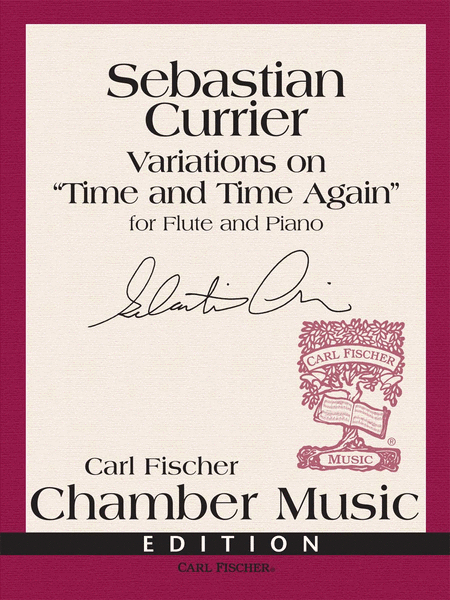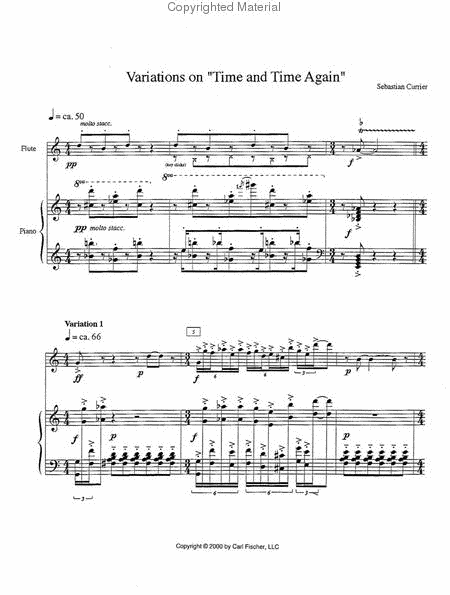Variations on "Time and Time Again"
-
Ships in 1 to 2 weeks
Details
Description
SKU: CF.W2562
Composed by Sebastian Currier. Set of Score and Parts. With Standard notation. 16+4 pages. Carl Fischer Music #W2562. Published by Carl Fischer Music (CF.W2562).ISBN 9780825885617. UPC: 798408085612. 9 X 12 inches.
In his Variations on “Time and Time Again,” Currier upends the typical theme-and-variations genre, with melodic and harmonic cells or fragments appearing during the course of the four interconnected variations. For most of the piece, the theme seems almost like a mirage, just imagined or hinted; re-interpreted before the fact, as it were. The theme finally appears near the end of the work, and turns out to be a languid, richly-harmonized bluesy ballad Currier has called “Time and Time Again.” For advanced players.
In his Variations on “Time and Time Again,” Currierupends the typical theme-and-variations genre, in whicha melody or other generative material will be introducedat or near the outset, and then deconstructed, expandedupon, or otherwise developed. In Currier’s compact work,melodic and harmonic cells or fragments appear duringthe course of the four interconnected variations. For mostof the piece, the theme seems almost like a mirage, justimagined or hinted at; re-interpreted before the fact, asit were. The theme finally appears near the end of thework, and turns out to be a languid, richly-harmonizedbluesy ballad Currier has called “Time and Time Again”(and worthy of being expanded into its own independentcomposition!).As in other Currier works, the title evokes multiple meanings.The literal passing of time is suggested at the work’s verybeginning, with delicate specks of sound and the clickingof keys on the flute proceeding only a little slower than aclock’s ticking seconds. This fragmentary chronologicallandmark reappears throughout the work as a bufferbetween each variation, reminding us of time’s inexorablepresence. The first variation brusquely interrupts, with avigorous, declamatory gesture contrasting starkly withthe soft tread of bluesy chords that already hint at theimpending theme’s jazzy harmonies. Variation 2 is abrilliant little dance in which the main theme’s melodiccontours begin to assume greater prominence. Variation3 seems almost improvisatory—an expansive, highlyembellishedmeditation set atop a sumptuous harmonicbackground—and grows an impetuous fugal variationthat recapitulates some of previously-heard material.Stark silence follows a massive climax, heralding thelong-awaited appearance of the brief, sultry theme,which disappears quickly, almost an illusion. Passing timereturns, but now dissolves into an ascending stream oftrills that evaporate into silence.


 Share
Share